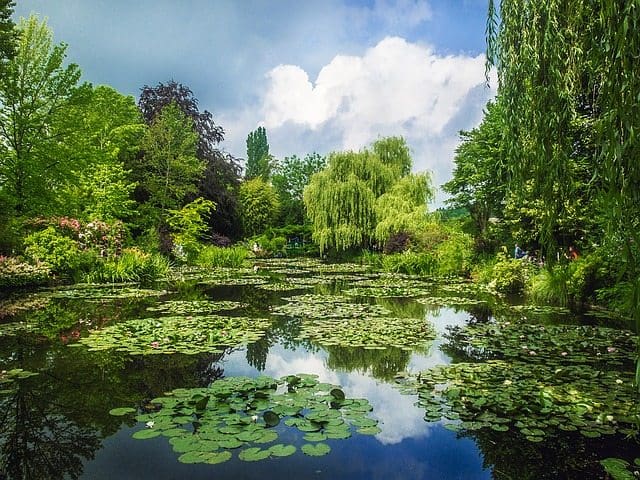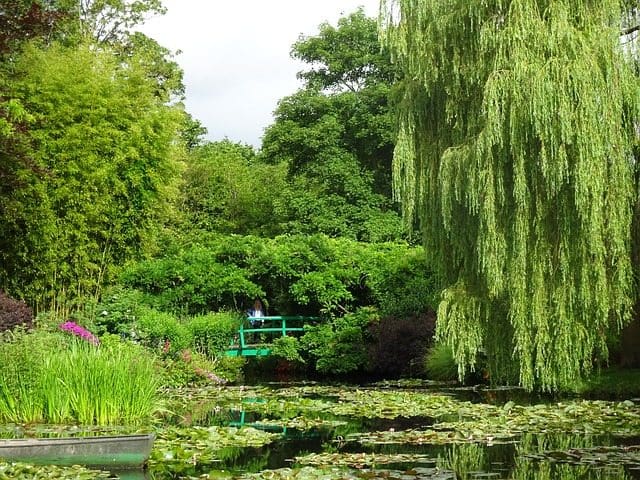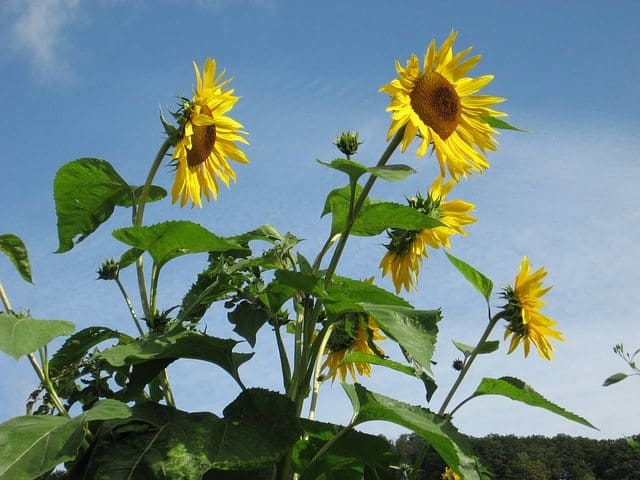 If you love Impressionist paintings, why not plan a visit to Giverny, in France, and see Monet’s garden, flowers, pond and bridges for yourself?
If you love Impressionist paintings, why not plan a visit to Giverny, in France, and see Monet’s garden, flowers, pond and bridges for yourself?
It’s been said the Impressionist art movement acquired its name from one of Monet’s paintings called “Impression, Sunrise.”
Giverny was Monet’s home during the last half of his life. He painted that sunrise on the Normandy coast in Le Havre. His cathedral series was painted in Rouen. But it was the bridge and the flowers in his gardens at home that he painted most often later in life.
You don’t have to be an art connoisseur to enjoy a visit. The gardens are a joy for anybody to see. If you’re not into art, but you like Monet’s water lilies, it’s fun to see where they grew. Walk the arched green bridge that he painted. See that little green boat on the pond.
You can tour his house, still painted the way it was when he lived there. The rooms still have the Japanese prints that he collected. The kitchen with its blue wall tiles is memorable. It is here he entertained other artists like Renoir, Matisse and Cezanne.
He really spent a lot of time developing his Norman garden which surrounds the house, personally supervising everything. He first worked on the planted beds that spill over with all kinds of colors. Later he diverted a river to form a pond. He planted the willows and bamboo you will see along its shore.
Once they grew, he painted them often. He filled the pond with lilies. Then came the green bridge which eventually became draped with wisteria. Both the Norman Garden and the Water Garden are filled with rare plants from all over the world.
He painted all of this at different times of the day and times of the year, playing with color schemes and … impressions. As his eyesight failed due to cataracts, his paintings became larger and more abstract: think of those large fuzzy water lilies in the Musee de l’Orangerie in Paris.
The whole area has become sort of a monument to Monet. It draws thousands of tourists every year. Explore the village with its little country church and half-timbered houses.
Guidebooks will tell you to see the Museum of American Art which is nearby. It displayed American artists like Mary Cassatt, Winslow Homer and James McNeill Whistler. The Musee d’Art Americain has now morphed into the Musee des Impressionnismes.
The little village is about 80 km (50 miles) from Paris. It can be reached as a day trip, or it makes a good stop on a driving tour of France if you are heading toward Normandy or anywhere in the north of France. The best time of year to go is spring through fall when the flowers are in bloom.
So stop in Giverny at least for a few hours and wander among Monet’s gardens. Feel like you’ve entered one of his paintings.
BECOME A TRAVEL LIKE THIS CONTRIBUTOR. Contact us for details.
The views, opinions and positions expressed by columnists and contributors are the author’s alone. They do not inherently or expressly reflect the views, opinions and/or positions of our publication.










